When taking a look at the intricately carved towers of Phimai’s central temple, you’d be forgiven for thinking you’ve accidentally crossed borders to nearby Cambodia. Almost everyone is familiar with the impressive ruins of Angkor Wat near Siem Reap, but only few people are aware that eastern Thailand actually has its own array of Khmer Ruins.
Apart from the equally impressive Phanom Rung Temple, the complex at Prasat Phimai arguably is the most fascinating among these and as it can easily be reached by public transport from the nearby city of Nakhon Ratchasima (Khorat), it’s the best opportunity to marvel at some Khmer craftsmanship during your travels in Thailand.
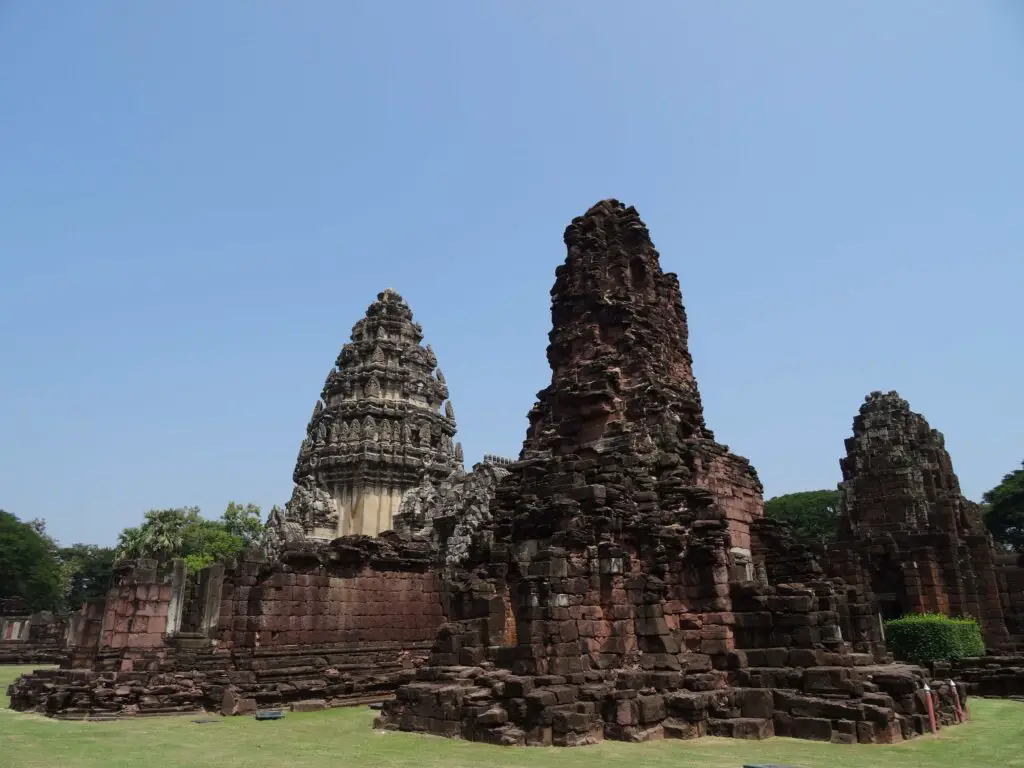
Read on for everything you need to know about exploring Prasat Phimai Temple and the surrounding Phimai Historical Park.
This post may contain affiliate links and I might earn a small commission at no additional cost to you. For more info click here.
The History of Phimai
Phimai town was part of the Khmer Empire (9th to 15th century) and Prasat Phimai was actually one of the most important temples of its time, aligned into the direction of Angkor and connected to the Khmer Capital by a 225km or 140mi. long Highway.
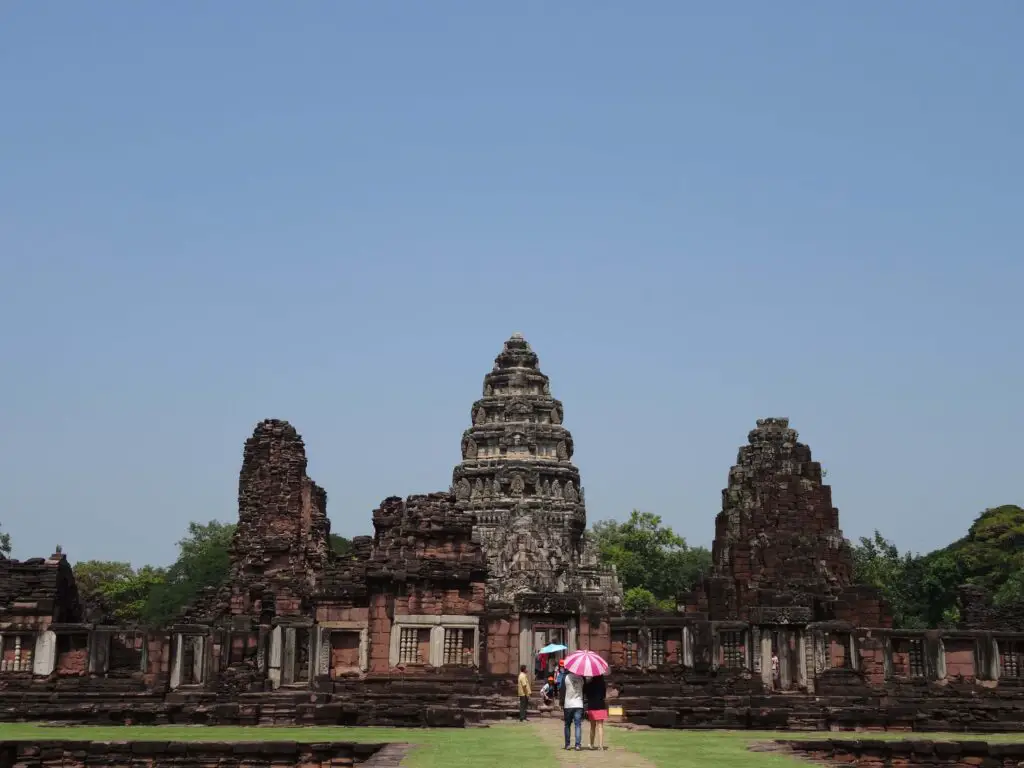
The remaining buildings of Phimai Temple date to the 11th and 12th century and follow the classic Khmer architectural style, which in turn is thought to have been influenced by older rock-carving techniques which originated in today’s India.
The current appearance of the temple is the result of a well-executed restoration project from the 1960s.
Exploring Prasat Phimai Historical Park
You enter the complex from the south, crossing the Naga Bridge, named for the statues of the snake-like mythological beings standing guard on all corners of the terrace. The large building to the west is thought to have been a rest house used by the king in preparation for religious ceremonies.

After crossing the bridge, you’ll pass through the Southern Gopura, the biggest remaining gate of the complex, and into the courtyard of the temple. Follow the causeway north to get to the inner gallery surrounding the central sanctuary, the most important and impressive part of the complex.
The central prang (tower-like spire) is carved from sandstone and thought to be the oldest remaining structure of the temple, probably older than Angkor Wat. The two towers to the south-west and south-east of the central prang have been built slightly thereafter.
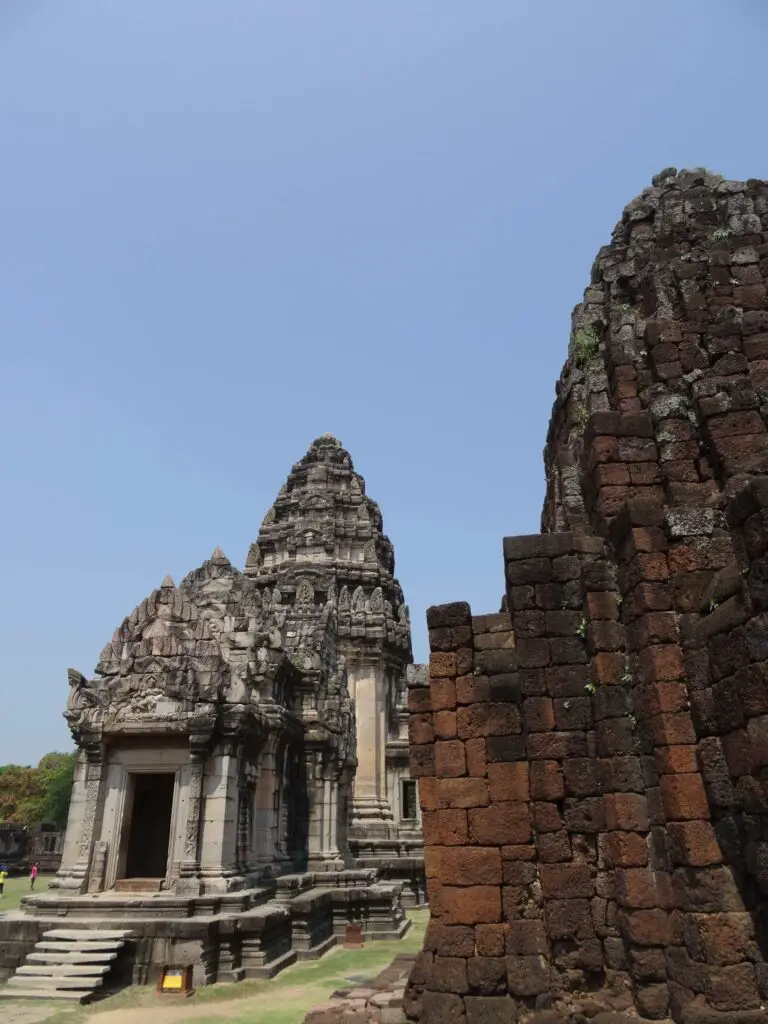
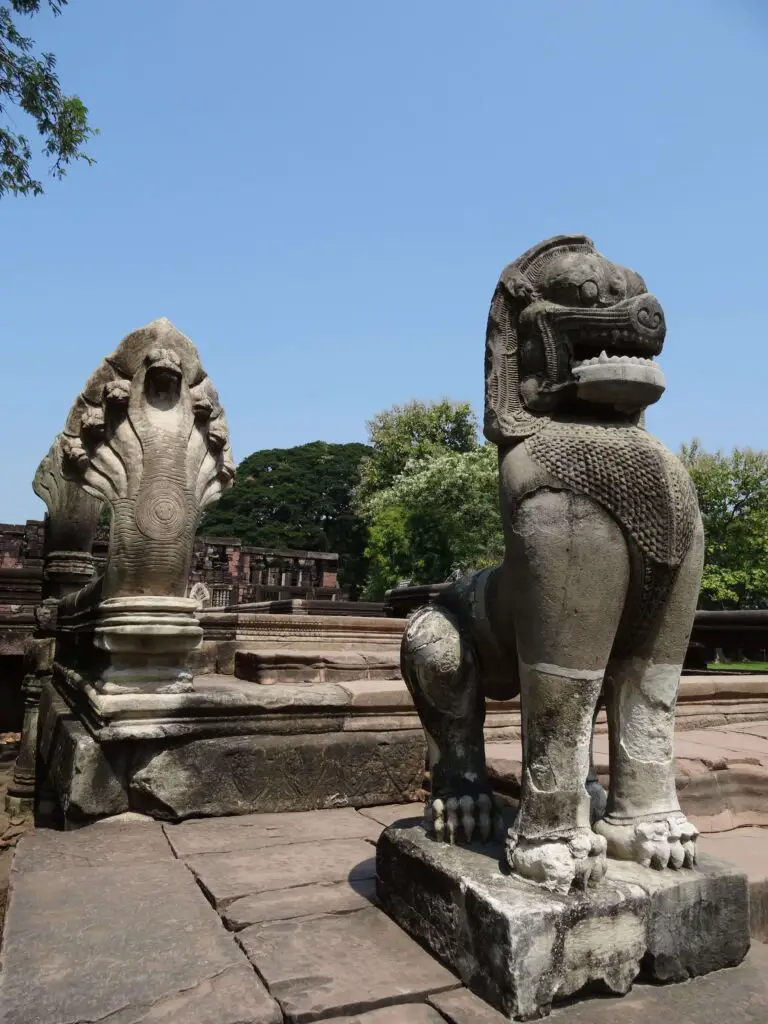
The beautifully layered spire of the central prang displays countless figural sculptures and is crowned by a lotus bud. The lintel over the southern entrance has a depiction of Shiva dancing. If you know your Hindu Mythology, you also know this spells bad news, as he destroys the Universe in the process (and you thought it was bad to step on your dancing partner’s toes – this guy takes it to a whole new level!).
The temple is open daily from 7AM to 6PM. The entrance fee is 100฿.
Other Sights in Phimai
Phimai National Museum
If you’re a fan of Khmer History or an Archaeology Nut like me, you shouldn’t miss this interesting museum, which displays plenty of statues and architectural elements both from Prasat Phimai and several other Khmer sites in Eastern Thailand.
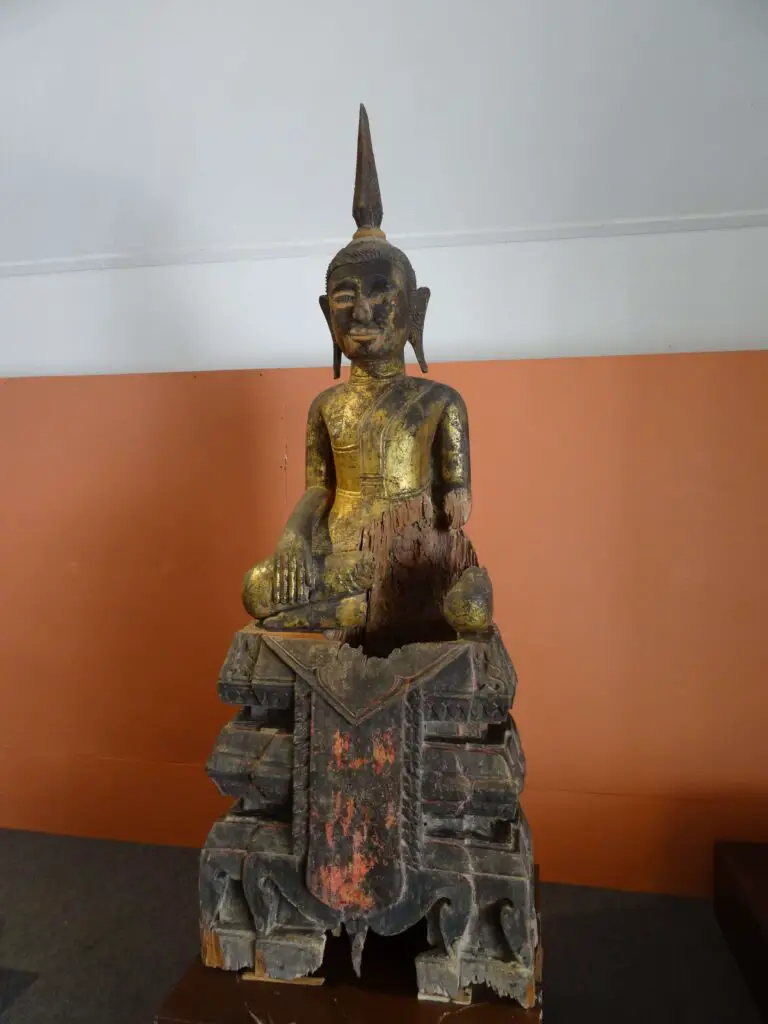
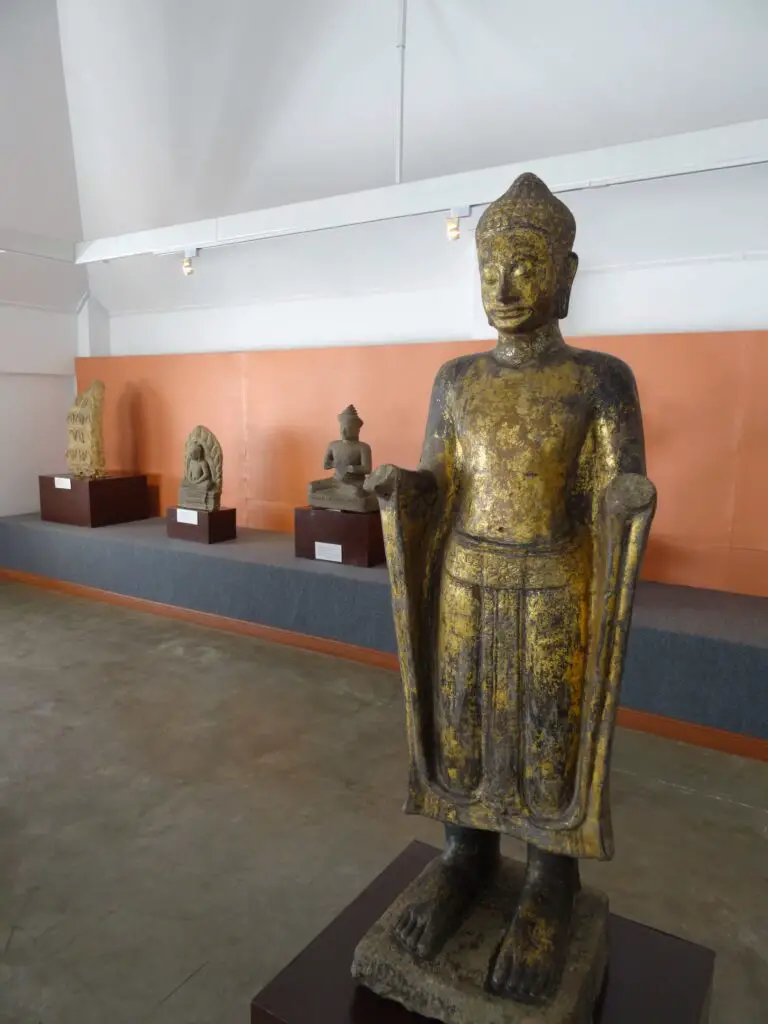
There are some interesting gilded Buddha Statues, as well as an entire hall full of beautifully carved stone fragments of doorways and column capitals. The Museum can be found a block north-east of the Temple on the shores of a small rectangular reservoir (also dating to Khmer times). The entrance fee is 100฿.
Sai Ngam Banyan Tree
The country’s biggest Banyan Tree can be found about 1.5km/1mi. east of the centre past the large Sa Phleng Reservoir. The 350-year-old tree is so huge that it kind of forms its own little forest. It’s pretty cool and definitely worth checking out if you have an hour or so to spare.
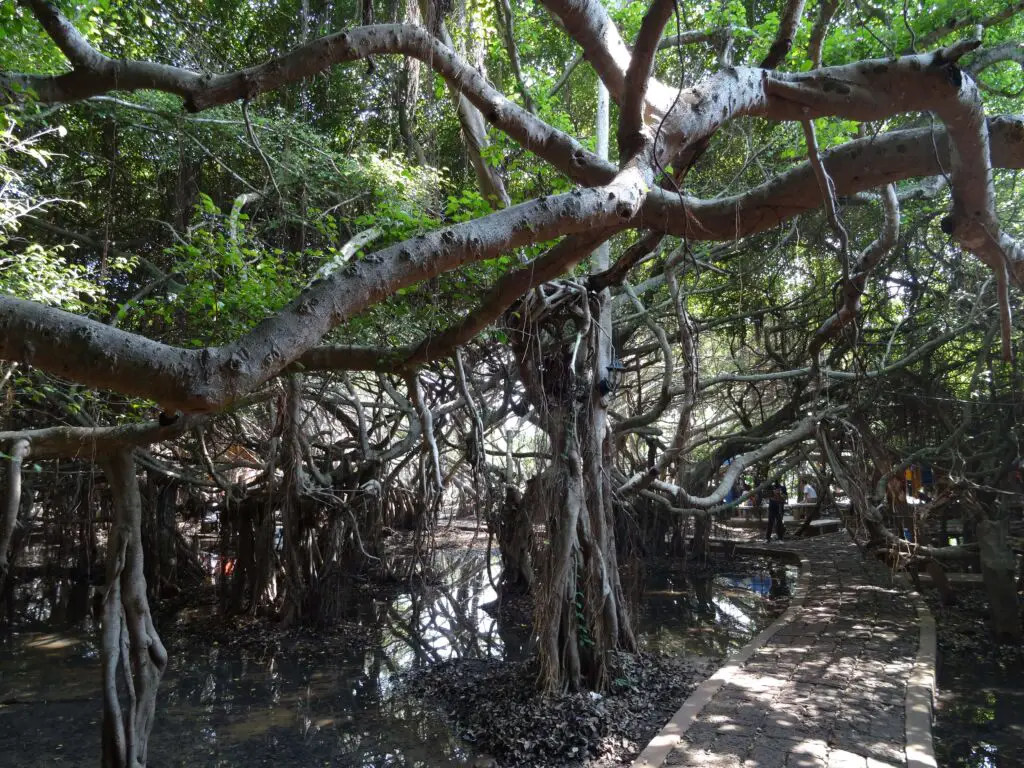
Walking there takes about 15 minutes, or you can take a motorcycle taxi – They hang around near the entrance to Prasat Phimai.
Smaller Archaeological Sites in the City Centre
If you haven’t had enough of exploring Khmer ruins, you can check out several smaller architectural remains in the vicinity of the town centre. For instance, three city gates of the former town still remain, of which Pratu Chai, which used to guard the important road to Angkor, is the most impressive.
Just follow the road south from Prasat Phimai for a few blocks to find it. The ruins of the Eastern Gate are just a block east of the temple.

A few hundred meters further south is Kuti Ruesi Noi, the remains of a 13th-century doctor’s office (Well, it’s referred to as a arogayasala or house of healing, but this is basically what it boils down to). Directly to the north-east is a small sacred pond.
About one kilometre south of the southern gate, sits Tha Nang Sa Phom, a former boat landing pier from around the same time. Nowadays, the cruciform platform looks a little forlorn in the middle of the meadow that constitutes the former harbour basin. Just follow the road south until it bends to the west to find it.
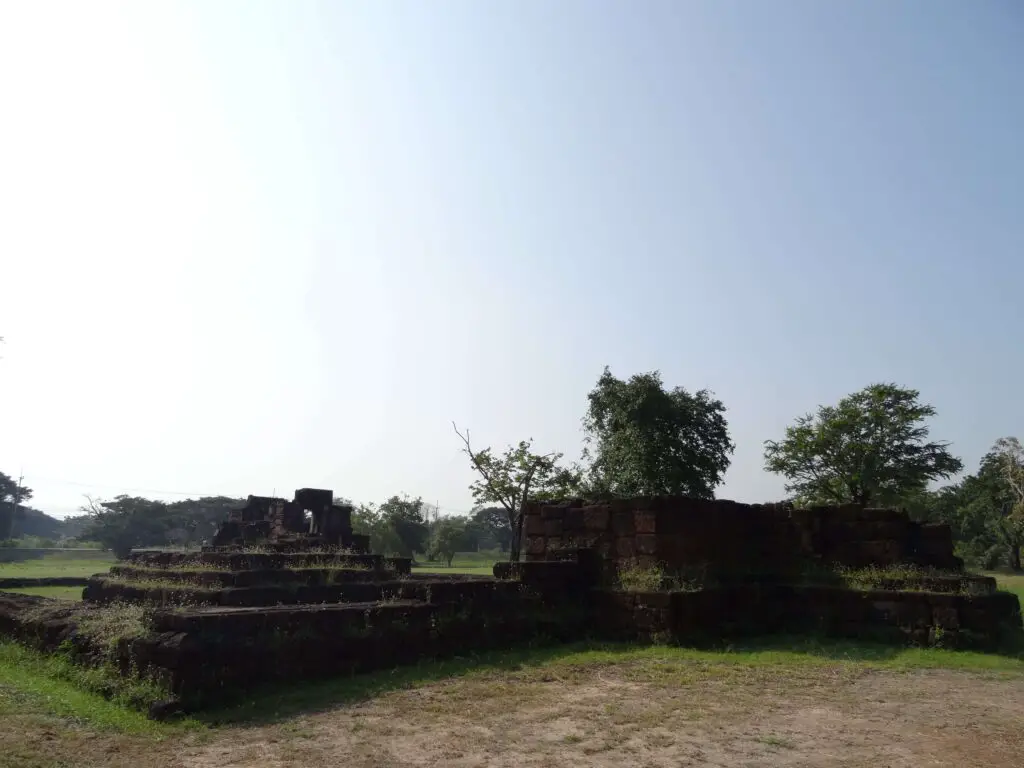
Finally, southeast of Prasat Phimai and slightly south of the clock tower you’ll find the remains of Meru Brahmathat, a brick chedi from the 18th century Ayutthaya Kingdom. It’s little more than a partially collapsed mound of bricks, but you’ll likely pass it when entering the town by bus.
Map of Phimai
Have a look at this map containing the attractions mentioned above.
Practicalities
How to Get to Phimai
Phimai Temple is located in the centre of Phimai, a small town in the Isan Province’s Nakhon Ratchasima Province. To get here from the capital Nakhon Ratchasima (aka. Khorat), just hop a bus at the New Bus Terminal west of the town centre (about 1,5 hours/50฿). The buses stop close to the entrance of the Archaeological Park.
Where to Stay in Phimai
I visited Phimai on a day trip from Khorat, but if you want to soak up the small town atmosphere or enjoy the place after the (admittedly few) day tourists have left, there are a couple of accommodation options in town.
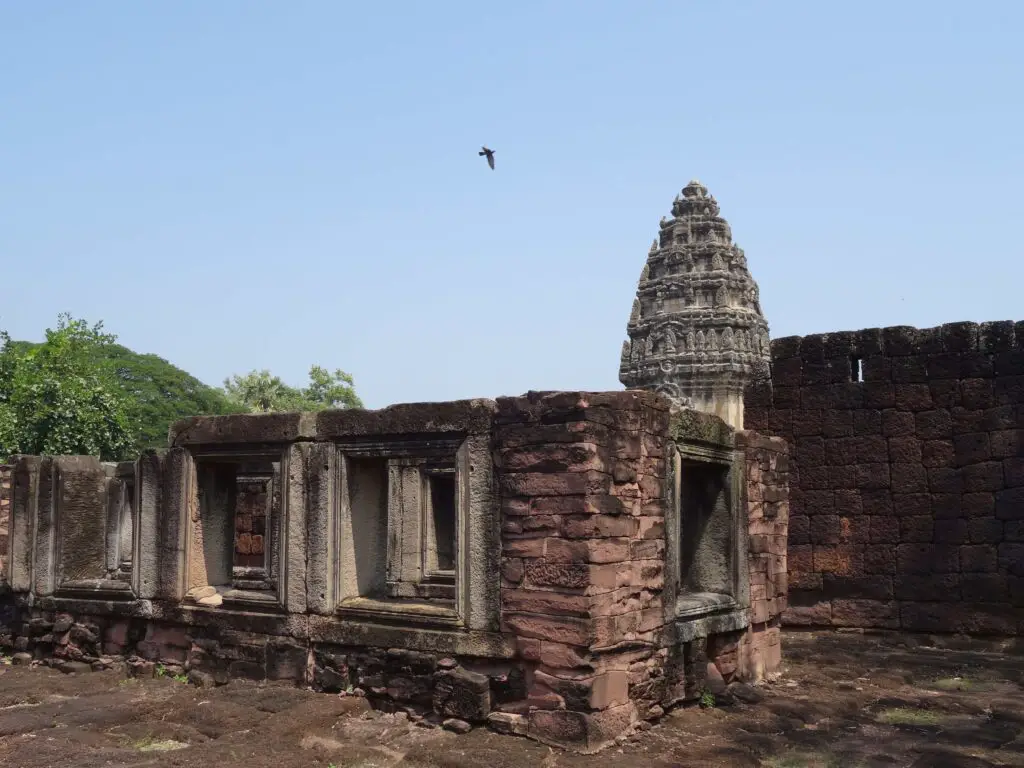
Centrally located Benya Guesthouse, seems to be the pick among the budget places. You’ll find it across the road from Prasat Phimai. Moon River Resort Phimai would be a slightly more upscale, but still very affordable option. Have a look at the map above for more options.
Where to Go Next
Nakhon Ratchasima, the laid-back gateway to the Isan Region
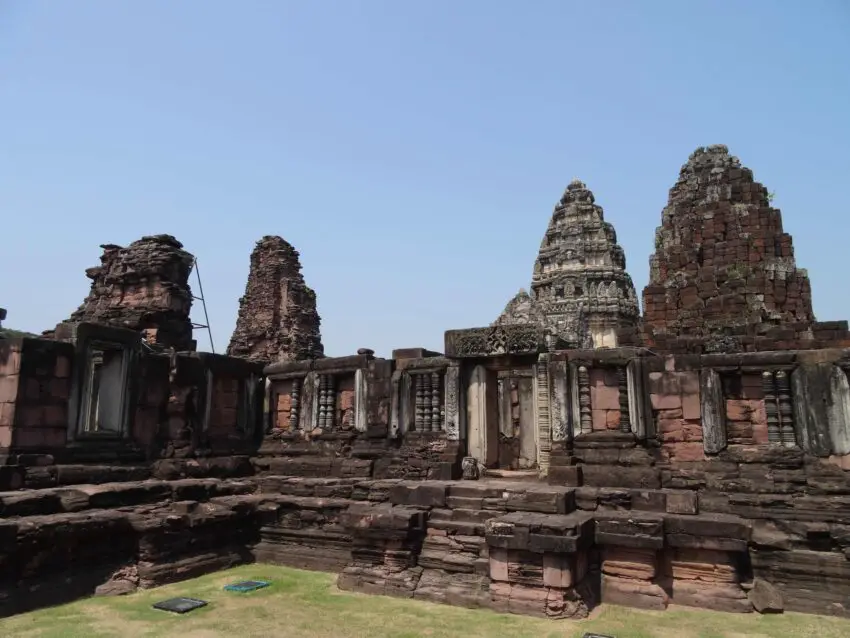
Wow how cool. I immediately pictured Cambodia the moment I spied your featured image. Reminds me of our Angkor Wat visit many years ago. Neat spot.
Ryan
Hello Ryan,
I can see why you thought of Cambodia – the Khmer Style is very distinctive. The Thai Area near the border (southern Isan-Region) is full of amazing Khmer Temples.
Another cool example is Phanom Rung a little further to the east. Plus, there are significantly fewer tourists than in Angkor Wat;-)
Reinhard